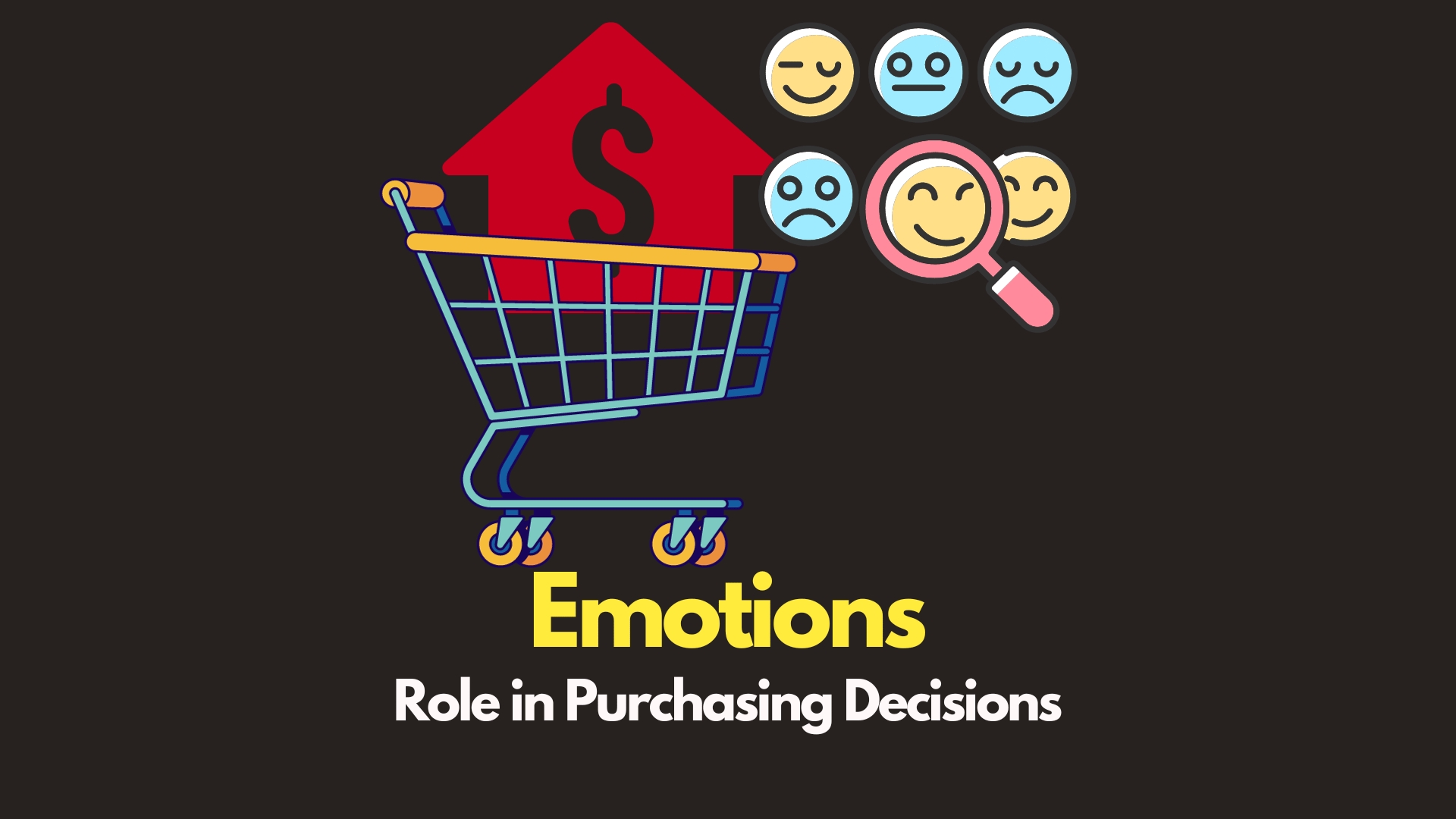Published
- 7 min read
The Role of Emotions in Purchasing Decisions

Introduction
Understanding the complex web of emotions that influence consumer behavior is crucial for businesses looking to enhance their marketing strategies and connect more deeply with their customers. In this article, we’ll delve into the psychological underpinnings of The Role of Emotions in Purchasing Decisions and explore how businesses can tap into these insights for success.
Emotional Triggers in Consumer Behavior

Key Takeaways:
- Emotions significantly influence consumer purchasing decisions.
- Understanding emotional triggers can enhance marketing strategies.
- Businesses can leverage consumer psychology for better customer engagement.
The Power of Positive Emotions
Positive emotions such as joy, trust, and anticipation can lead to increased brand loyalty and customer satisfaction. These emotions often result in repeat purchases and can be a driving force behind word-of-mouth recommendations.
Negative Emotions and Brand Perception
Conversely, negative emotions like fear, anger, or disappointment can harm a brand’s reputation. Companies must address these emotions promptly to prevent lasting damage to customer relationships.
The Impact of Emotional Marketing
Emotional marketing strategies that resonate with the target audience can create a strong connection between the consumer and the brand. This connection can influence purchasing decisions and encourage brand advocacy.
Leveraging Emotions in Marketing Strategies
Understanding the Consumer’s Emotional Journey
To create effective marketing campaigns, businesses must map out the consumer’s emotional journey and identify key touchpoints. This process involves understanding what emotions are triggered at each stage of the purchasing process.
Crafting Messages That Evoke Emotions
Marketing messages that evoke strong emotions can be more memorable and impactful. Brands should aim to craft narratives that resonate emotionally with their audience.
Color Psychology in Marketing
The use of color in marketing materials can subconsciously influence consumer emotions and behaviors. For example, red can evoke excitement, while blue can instill a sense of trust. Learn how to leverage this with our article on the impact of color psychology in marketing and consumer perception.
Case Studies and Practical Examples
Brand Loyalty and Emotional Connections
Case studies have shown that brands that establish an emotional connection with consumers enjoy higher levels of brand loyalty. Discover the hidden psychology behind brand loyalty and how to win the hearts and wallets of your customers.
Emotional Branding Success Stories
Successful brands often have emotional branding at the core of their marketing strategies. Learn from practical examples in our ultimate guide to crafting a marketing strategy.
Wrap-up
The role of emotions in purchasing decisions cannot be overstated. By understanding and leveraging these emotional triggers, businesses can create more compelling marketing strategies that resonate with consumers on a deeper level. For a more comprehensive understanding of consumer behavior, explore the intricacies of understanding consumer decision-making processes.
Emotional Intelligence in Business

Key Takeaways:
- Emotions can act as a catalyst for impulse purchases.
- Tailored emotional experiences can enhance customer retention.
- Recognizing emotional patterns helps predict consumer trends.
The Role of Empathy
Emotional intelligence, particularly empathy, plays a significant role in understanding customer needs and providing personalized experiences. Businesses that show they truly understand their customers’ emotions can build stronger, more meaningful relationships.
Training for Emotional Recognition
Companies are increasingly training their employees in emotional recognition to better respond to customer needs and improve the overall customer experience. This not only aids in immediate sales but also contributes to long-term customer loyalty.
The Science of Emotions and Purchasing
Neurological Insights
Neuroscience research has shed light on how emotions influence decision-making processes in the brain. For instance, the release of dopamine during positive emotional experiences can lead to repeat purchases.
The Role of Brain Waves
Understanding brain waves and their association with different emotional states can provide insights into consumer behavior. For example, beta waves are linked to alertness and concentration, which can be crucial during the decision-making phase of a purchase.
Strategies for Emotional Engagement
Personalization and Customization
Creating personalized experiences based on consumer preferences and previous emotional responses can significantly impact purchasing decisions. Tailoring products and services to individual emotional needs leads to higher satisfaction rates.
Emotional Storytelling
Storytelling that evokes emotions can be a powerful tool in marketing. It allows consumers to form a personal connection with the brand, often leading to a more profound commitment and brand recall.
Sensory Marketing
Engaging multiple senses can amplify the emotional impact of marketing efforts. Sensory marketing aims to create holistic experiences that can leave a lasting emotional imprint on the consumer.
Measuring Emotional Responses
Sentiment Analysis
Businesses use sentiment analysis tools to measure the emotional tone behind customer feedback and social media discourse. This data helps refine marketing strategies and product development.
Biometric Feedback
Biometric feedback methods, such as eye tracking and facial expression analysis, provide objective measures of emotional responses to marketing stimuli, allowing for more precise adjustments to campaigns.
Wrap-up
Emotions are at the heart of every purchasing decision. By incorporating emotional intelligence into business strategies, companies can forge stronger connections with their customers, leading to increased sales and customer loyalty. For further insights into how emotions shape consumer behavior, delve into the intersection of technology and mindfulness.
Emotionally Driven Market Trends

Key Takeaways:
- Emotions drive not only individual purchases but also shape market trends.
- Emotional branding can create a competitive edge in saturated markets.
- Companies that align their values with their customers’ emotions foster stronger loyalty.
Spotting Emotional Trends
Businesses that can identify and capitalize on emotional trends have a significant advantage. By analyzing social media and consumer behavior, companies can spot emotional shifts that signal new market opportunities.
The Influence of Social Media
Social media platforms are hotbeds for emotional expression, and they play a pivotal role in shaping consumer attitudes and behaviors. Understanding the impact of social media on teen shopping trends can give businesses a head start in reaching younger demographics.
Emotional Branding as a Competitive Strategy
Differentiation Through Emotion
In crowded marketplaces, emotional branding can be the key differentiator. Brands that evoke strong, positive emotions can stand out from competitors and command a loyal customer base.
Aligning Brand Values with Customer Emotions
When a company’s values align with its customers’ emotions and beliefs, it can create a powerful bond. This alignment is particularly effective in fostering brand loyalty among consumers who prioritize authenticity and ethical considerations, as seen in the rise of sustainability in fashion’s future.
Emotional Resonance in Product Development
Designing with the Customer in Mind
Product development should not only focus on functionality but also on the emotional response it elicits. Products that resonate emotionally with consumers often see greater success in the marketplace.
The Role of User Experience (UX)
A product’s user experience can significantly impact the emotional response it generates. A positive UX design can lead to higher satisfaction and a greater likelihood of repeat business.
The Future of Emotion in Marketing
Advancements in Emotional Analytics
As technology advances, so does the ability to analyze and understand emotions. Tools like AI-powered sentiment analysis and emotional recognition software are becoming more sophisticated, offering deeper insights into consumer emotions.
Integrating Emotions into Omnichannel Marketing
Omnichannel marketing strategies that seamlessly integrate emotional elements across all touchpoints can create a consistent and compelling brand narrative. This holistic approach ensures that emotions are considered at every stage of the customer journey.
Conclusion
The role of emotions in purchasing decisions is a powerful force that businesses can no longer afford to overlook. By recognizing and strategically responding to emotional cues, companies can create more effective marketing campaigns, develop products that truly resonate with consumers, and build lasting relationships based on emotional loyalty. For further exploration into the nuances of consumer behavior, consider the insights from understanding the psychology of pricing to leverage consumer perceptions.